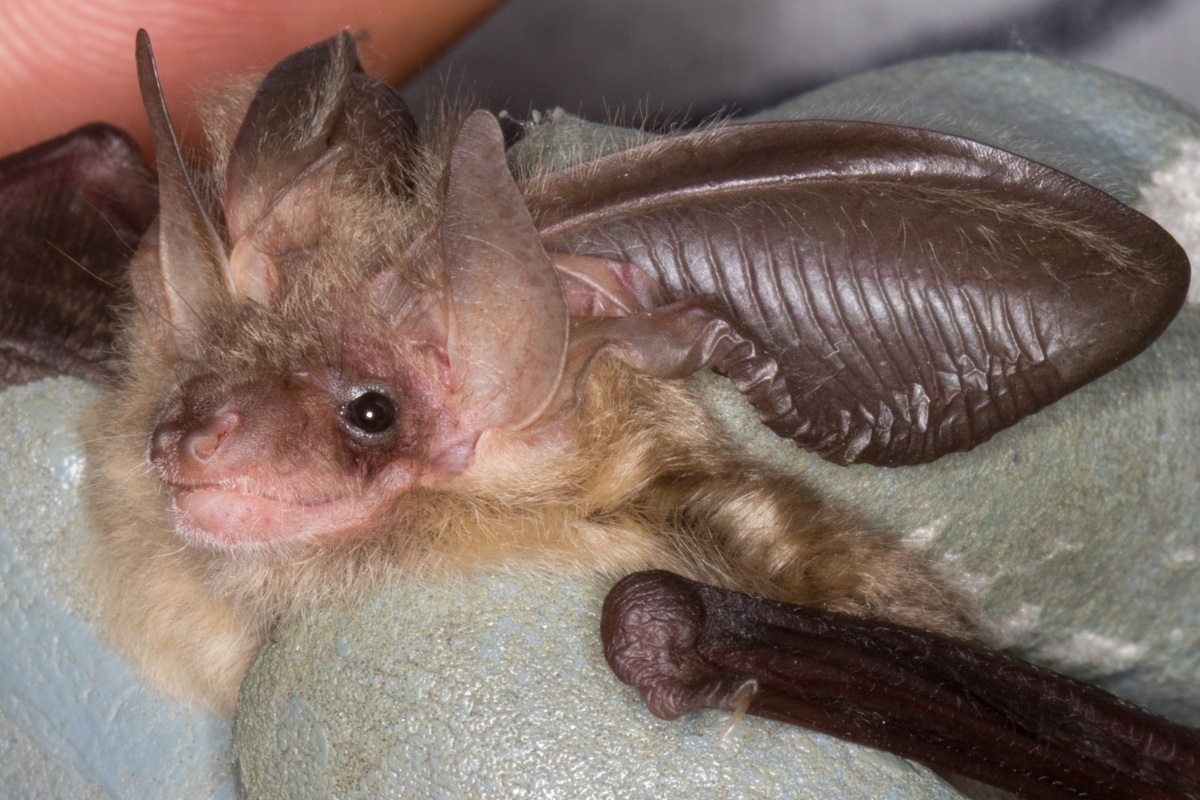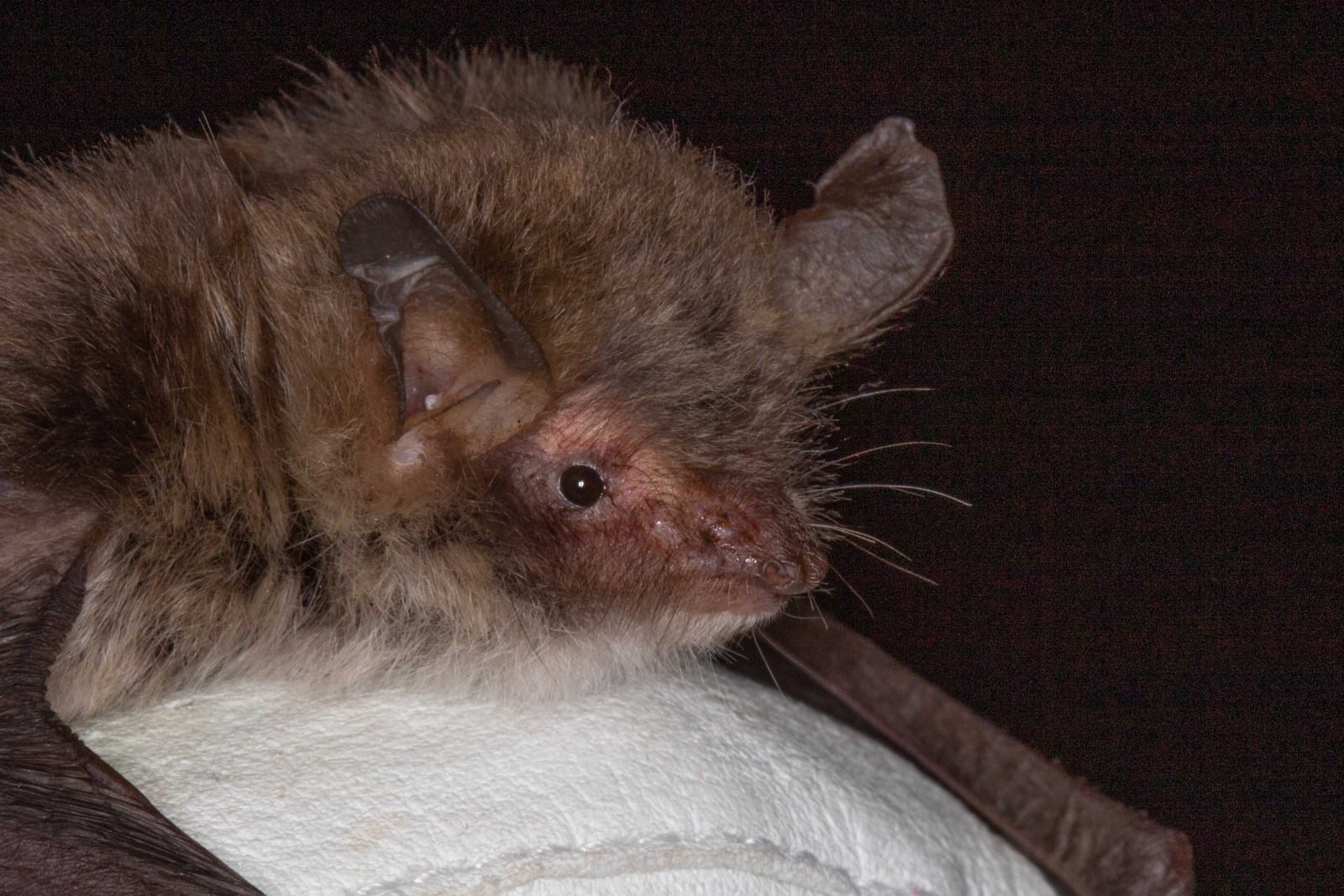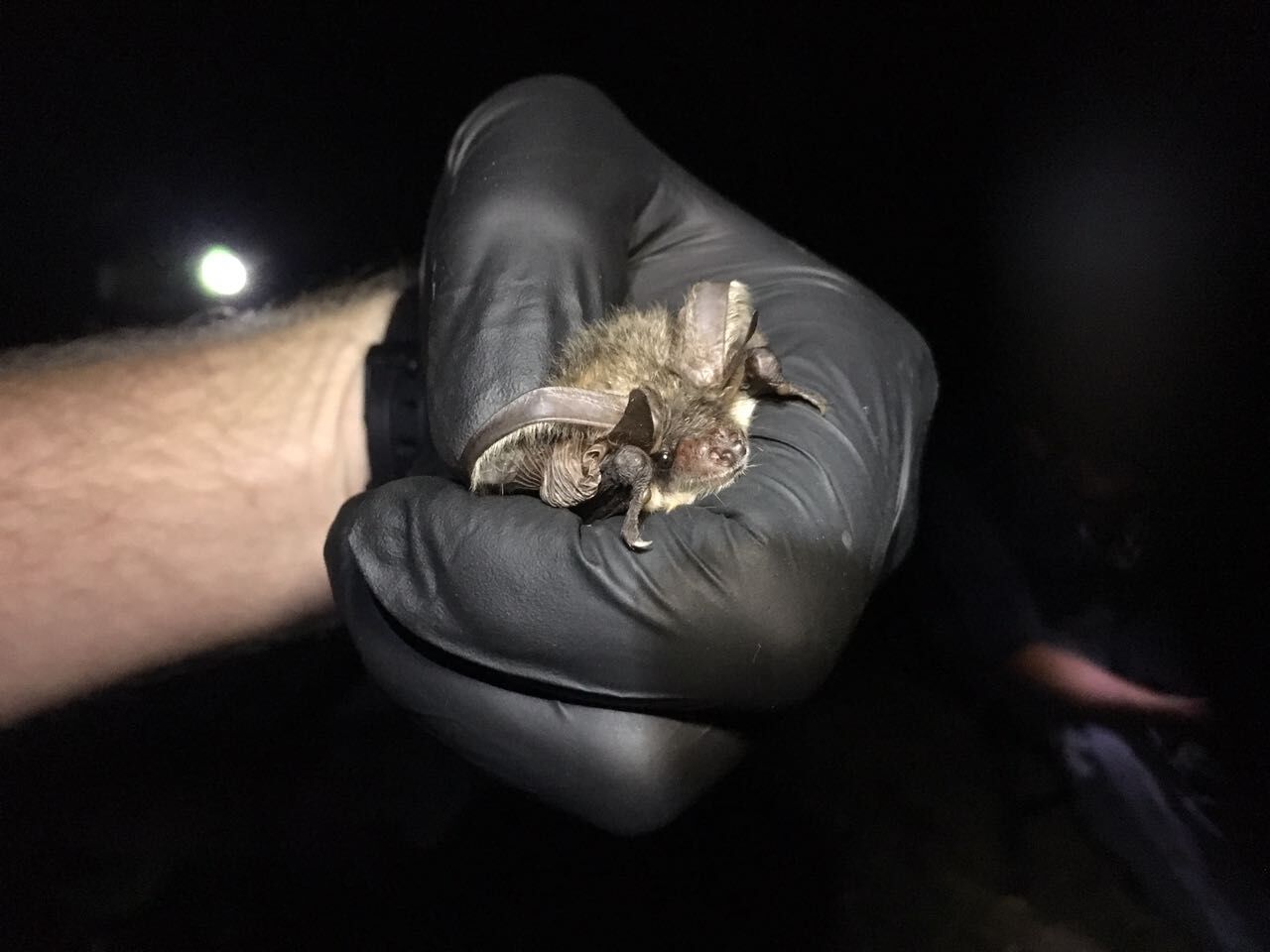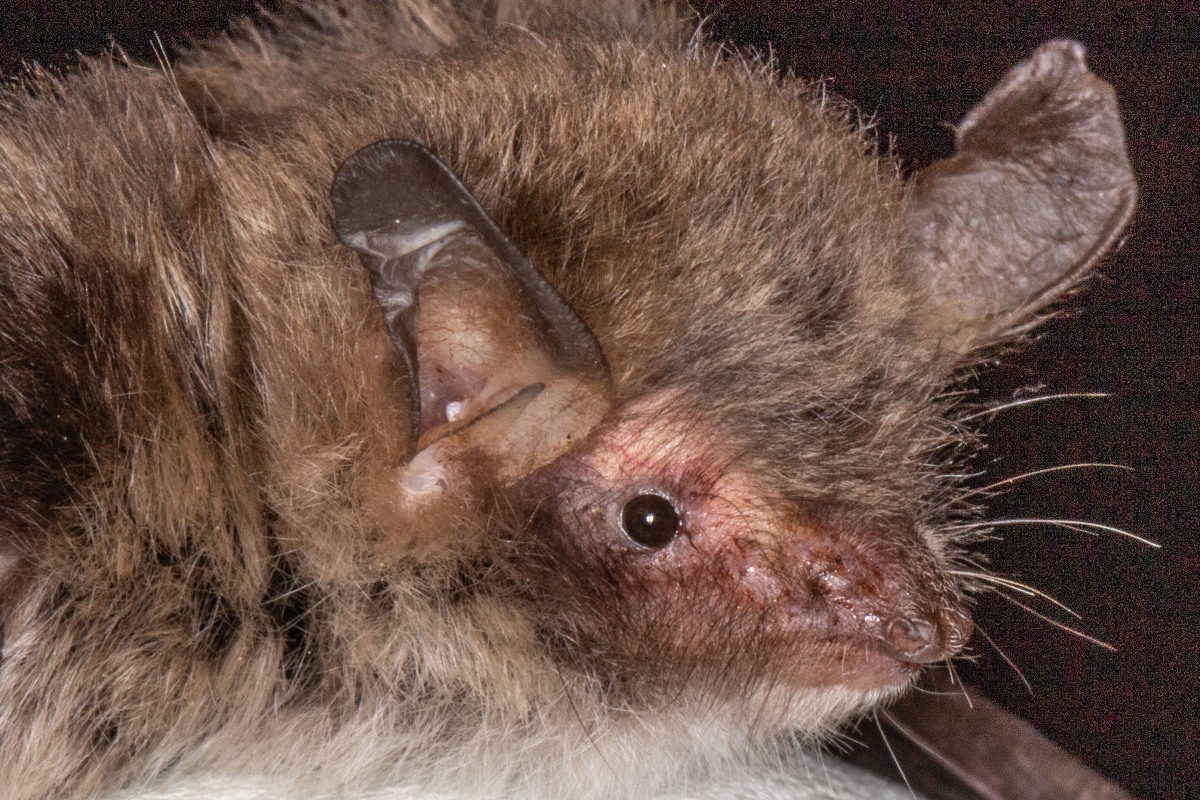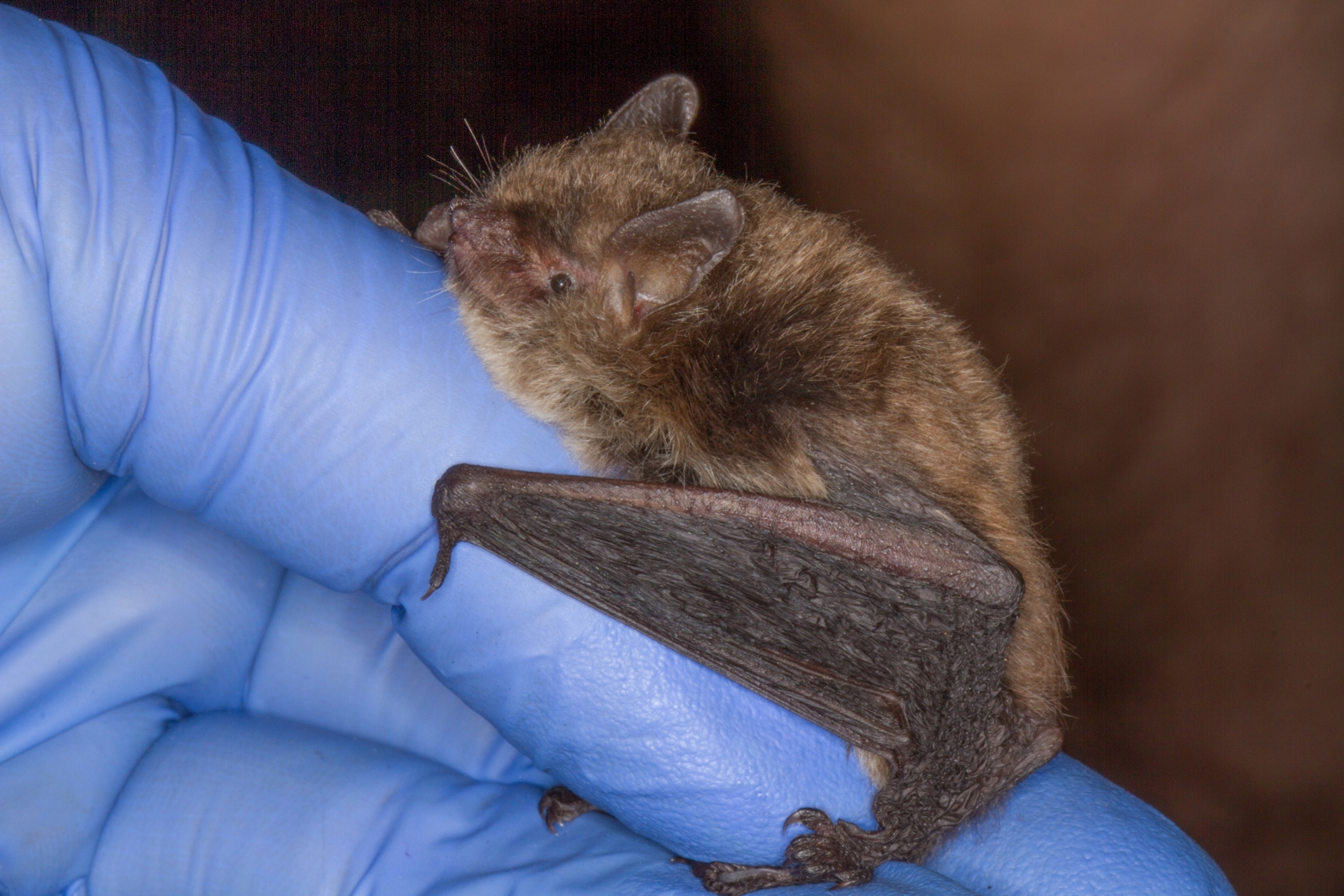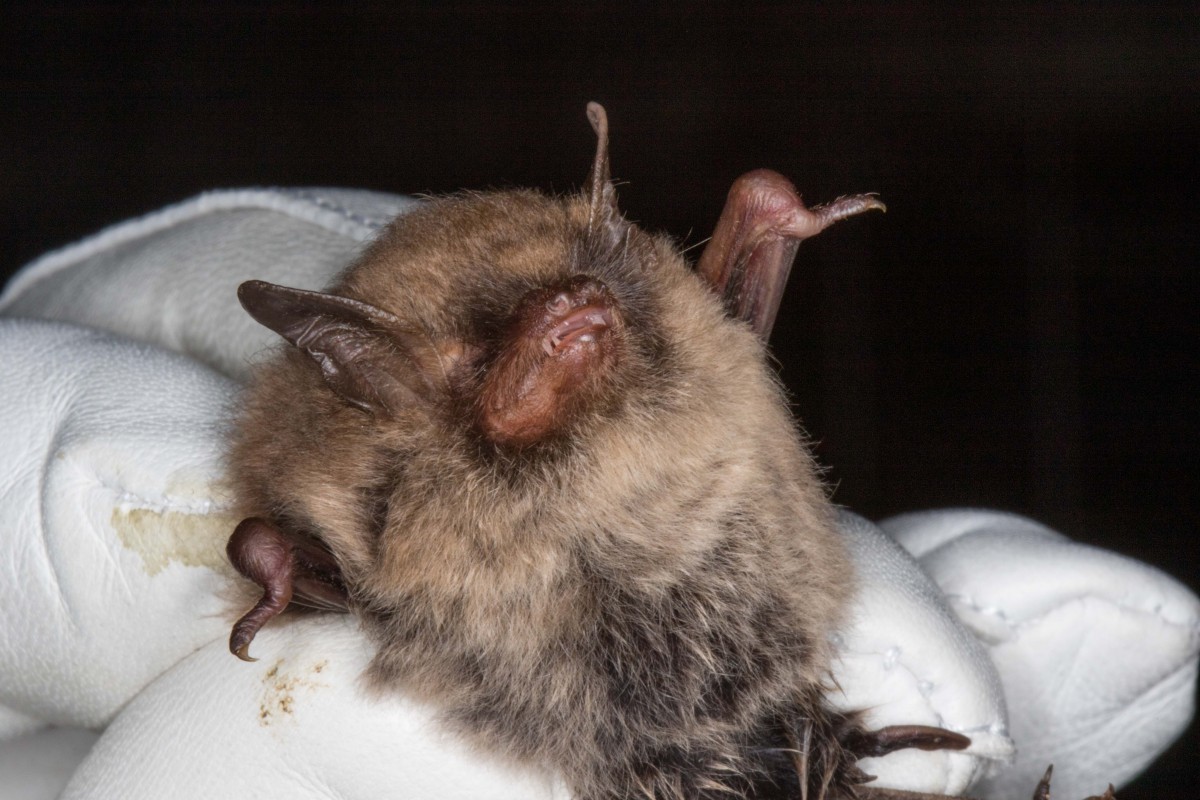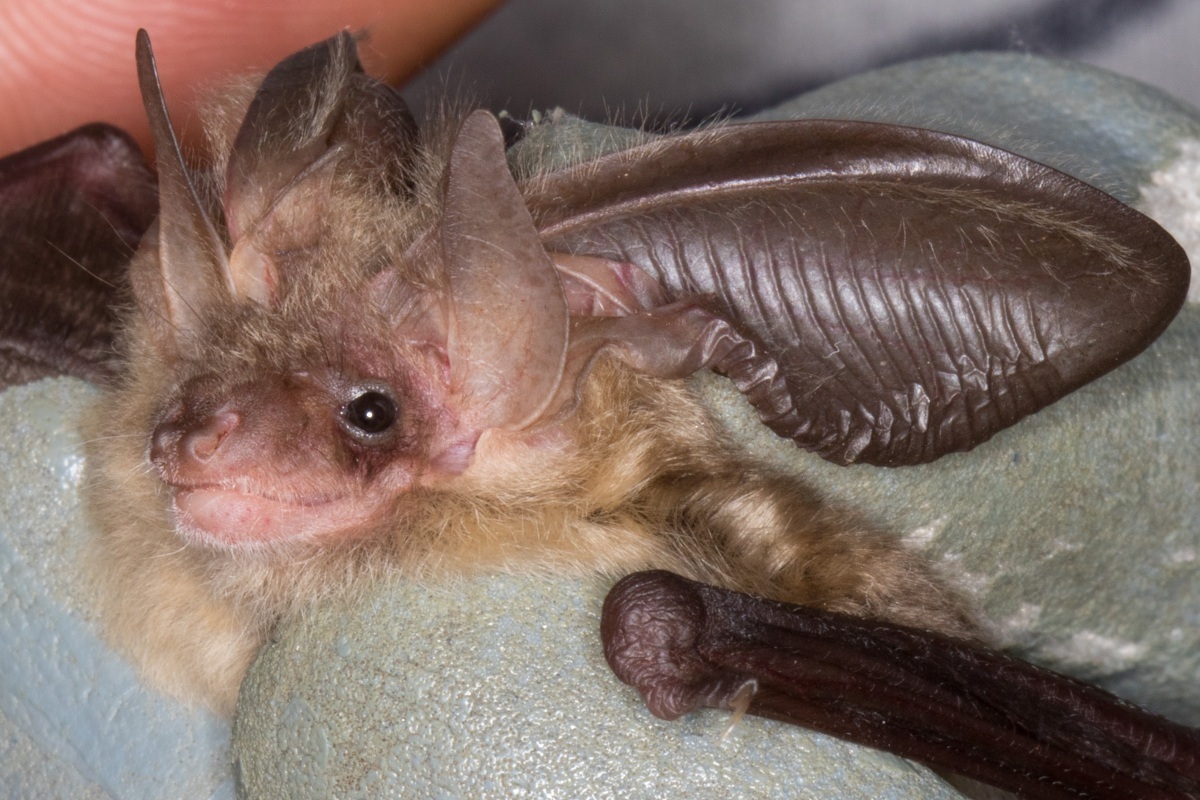Long-eared bats
Brown long-eared ( Plecotus auritus )
Grey long-eared ( P. austriacus )

photo by Vikki Robertson
- Biometrics:
-
- Head & body: Brown 37-52mm / Grey 40-55mm
- Wingspan: 230-285mm
- Weight: Brown 6-12 grams / Grey 7 – 14 grams
- Call frequency: Brown 40 kHz (range 25 – 50 kHz)
- Age: Up to 30 years
- Flight patterns:
- A slow fluttery flight, anywhere between low levels to the tops of the trees.
- Emergence times:
- 45 minutes after sunset.
- Food:
- Brown long-eared bats take moths (especially noctuids), beetles (especially scarabs), diptera, earwigs and spiders. Greys appear to have a slightly different diet, mainly preying on moths but also taking beetles and diptera
- Feeding habitat:
- Brown long-eared bats appear to mainly use open deciduous and coniferous woodland, parkland and orchards. Grey Long-eared bats tend towards open meadows and pasture as well as woodland.These bats are gleaners and pick insects up off any given substrate, whether it is leaves or bark, as well as in flight. They have also been given the title whispering bats due to the use of their quiet echolocation calls and have particularly sensitive low frequency hearing, often locating prey from the sounds of the prey’s own movements alone!
- Roosts:
- Long-eared bats have very specific roost requirements and enjoy using older buildings, especially exposed positions within the attic space. At night they may often be seen using feeding perches such as the roof of a porch. It can be noted that when at rest these bats will often curl their ears back or tuck them under their wings.
- Summer –
- As mentioned these bats favour older buildings such as barns and churches and shelter among the roof timbers of the apex, especially around the ridge ends and chimney. During the summer months they may also use tree roosts and tend to have a small feeding range during this season.
- Winter –
- Hibernation begins in November and the long-eareds’ presence is not obvious, roosting in trees and hollow walls with small numbers in caves and tunnels (although the latter two are used especially so in early winter and after prolonged cold spells).
- Breeding:
- Mating occurs in browns from October to April with the greys favouring September to November for such activities. The establishment of maternity roosts coincide with these dates, however, these two species may use such roosts throughout the entire year.Unlike other bats in the U.K. the males of the Brown Long-eared bat may be present in the maternity roosts. Greys appear somewhat more territorial than this and do not exhibit this behaviour.Females give birth to single young from late June to mid July, which are fully weaned in 6 weeks.
- General distribution notes:
- The brown long-eared bat is commonly found throughout the U.K., Ireland and the Isle of Man, with some individuals found in Jersey. The grey long-eared bat is found to be very rare in the U.K., confined to the South of England, although appears to be a relatively common resident here in Jersey.
